-
Posts
12444 -
Joined
-
Last visited
-
Days Won
554
Content Type
Profiles
Forums
Events
Everything posted by Fiery
-
I'm afraid AIDA64 is not suitable for that task. You may want to check out the following tools, one of them may be suitable: https://www.raymond.cc/blog/schedule-windows-vista-shutdown-with-vista-shutdown-timer/
-
It's quite difficult to diagnose such issues, but let's give this a go: 1) Please go to AIDA64 installation folder and create a new file (e.g. text file) called ENABLE_HWMONINIT_LOG.TXT. You don't need to put anything into the file itself. 2) Start AIDA64, and go to the Computer / Sensor page 3) Wait for 30 seconds, and then close AIDA64 (or close it using the Task Manager if you have to) 4) Check out your Windows Desktop where a new file called LowLevelLog.txt should have been created. Send us the file either by copy-pasting into this topic, or by attaching the file to a post. 5) After you've done with that test, make sure to remove the file ENABLE_HWMONINIT_LOG.TXT from the AIDA64 folder to disable its special debug logging facility. Thank you in advance!
-

SensorPanel disappears when switching focus between two monitors
Fiery replied to whatever123455's topic in Bug reports
What we've found out recently is that indeed when AIDA64 SensorPanel is running on a secondary display and the primary display resolution changes, the SensorPanel position will change since it's tied to a relative position counting from the top-left corner of the primary display. One workaround for such issues we've found is to move the secondary display (in your case it's the tertiary display I guess) to the left of the primary display in the multi-monitor configuration panel of the WIndows 10 Settings. So when the small display is on the left and the large (primary) display is on the right, the position of the SensorPanel will be retained even when the primary display resolution changes. -
What we've found out recently is that indeed when AIDA64 SensorPanel is running on a secondary display and the primary display resolution changes, the SensorPanel position will change since it's tied to a relative position counting from the top-left corner of the primary display. One workaround for such issues we've found is to move the secondary display to the left of the primary display in the multi-monitor configuration panel of the WIndows 10 Settings. So when the small (secondary) display is on the left and the large (primary) display is on the right, the position of the SensorPanel will be retained even when the primary display resolution changes.
-
It's not possible right now. I'm curious: what part of your layout would you like to rotate? And how many degrees of angle?
-
We don't provide such services, but maybe someone else reading this would be willing to help you out.
-

Cpu frequencies droping after 10 min of stress test
Fiery replied to Alvaro BaSa's topic in Hardware monitoring
Try to run the AIDA64 System Stability Test again, but only have the FPU subtest enabled. That will put the most thermal stress on your CPU. Watch the bottom graph for any throttling activity. My assumption is that the frequency drops occur because your CPU is overheating and it throttles back to protect itself from permanent damage due to excessive thermal state. -
Thank you! That's very strange. Can you please try to update the driver for the standard HID (Human Interface Device) driver for it? That should fix communication with the device and AIDA64.
-
That's quite the BS Push them to show it to you how can you use it with AIDA64.
-
It looks interesting, but as the seller claims it is compatible with AIDA64 out of the box, you need to contact him to find out how to use it with AIDA64. My guess would be that it works using the CH424 LCD module that you can activate in AIDA64 / main menu / File / Preferences / Hardware Monitoring / LCD / CH424. We've ordered a sample of that display, but it will take a few days for it to arrive. I will let you know what can we find out on our end once the device hits our labs.
-

fixed: Missing sensors (Asus ROG Strix B550-F Gaming)
Fiery replied to Beans81's topic in Bug reports
Thank you! Contrary to our previous assumption your motherboard doesn't have EC that would expose further thermal readings. Please check if you have the same temperatures reported in AIDA64 than in the BIOS Setup (UEFI Setup). If you have more thermal readings in the BIOS, please let us know what they are. -

High CPU usage after a while (Gigabyte X570 Aorus Master + RTX 3090)
Fiery replied to adomas's topic in Bug reports
Can you please try to remove (or hide) the RTSS item from your SensorPanel? BTW, when you experience the high CPU usage, can you see the memory footprint of AIDA64 to become high as well? -
Try to check whether you have any left-over main executable for AIDA64 (AIDA64.EXE file). Remove all remaining instances of that file and restart Windows. After doing that, the kernel driver file (KERNELD.X64) should be free to be removed also.
-

SensorPanel disappears when launching certain games
Fiery replied to dazzyboy10's topic in Bug reports
Thank you for letting us know about your way around the issue. What we've found out recently is that indeed when AIDA64 SensorPanel is running on a secondary display and the primary display resolution changes, the SensorPanel position will change since it's tied to a relative position counting from the top-left corner of the primary display. One workaround for such issues we've found is to move the secondary display to the left of the primary display in the multi-monitor configuration panel of the WIndows 10 Settings. So when the small (secondary) display is on the left and the large (primary) display is on the right, the position of the SensorPanel will be retained even when the primary display resolution changes. -

CPU Package temperatures doubt (Xeon E5-2650 v2 + Asus Rampage IV Extreme)
Fiery replied to Mauro's topic in Bug reports
We've checked, and I'm pretty sure our CPU Package temperature measurement works fine. I'm not sure if HWMonitor's correct since it's not our software, so I don't have an oversight on the validity of those readings. However, if you're in doubt about the CPU Package temperature, just ignore it and focus on the other CPU related thermal readings that your motherboard and processor provides. -
PCI devices and their registers, including PCIe root port descriptors are configured by the BIOS at system bootup. Apparently on your system the motherboard fails to put the right PCIe speed information into the PCI devices. It's a minor cosmetical issue that you can freely ignore, especially that as you've proven using our benchmarks, the devices are indeed working in 3.0 mode.
-
Your Z63 device presents as a USB device in your system, but the default HID driver isn't seem to be installed for it. Can you please check (using e.g. the Windows Device Manager) what driver do you have installed for your Z63?
-
Please right-click on the bottom status bar of AIDA64 main window --> System Debug --> USB Dump. Copy-paste the full results into this topic, or attach the results as a TXT file to your post. You may need to enable status bar in AIDA64 / main menu / View first. Thanks, Fiery
-
AFAIK it's not possible to detect such details for memory cards under Android.
-
You can only convert an Android platform to 64-bit by installing a new Android firmware update that is 64-bit. You need to consult with the manufacturer of your device and inquire them whether they have such an update for your device.
-
It's not supported by AIDA64 yet. In order to let us have a better understanding on the USB layer of it, please right-click on the bottom status bar of AIDA64 main window --> System Debug --> USB Dump. Copy-paste the full results into this topic, or attach the results as a TXT file to your post. You may need to enable status bar in AIDA64 / main menu / View first. Thanks, Fiery



